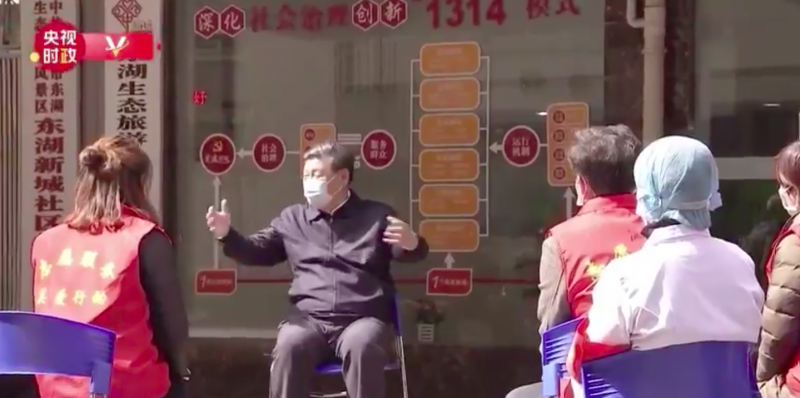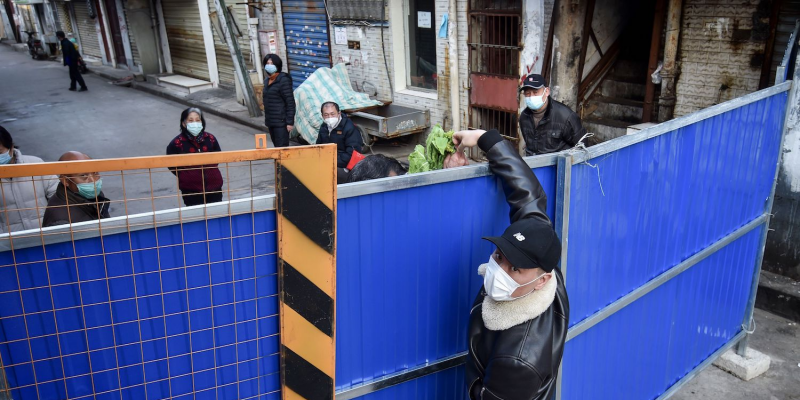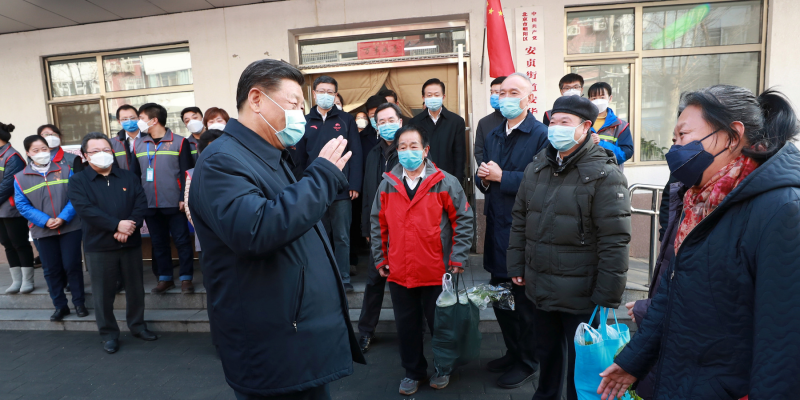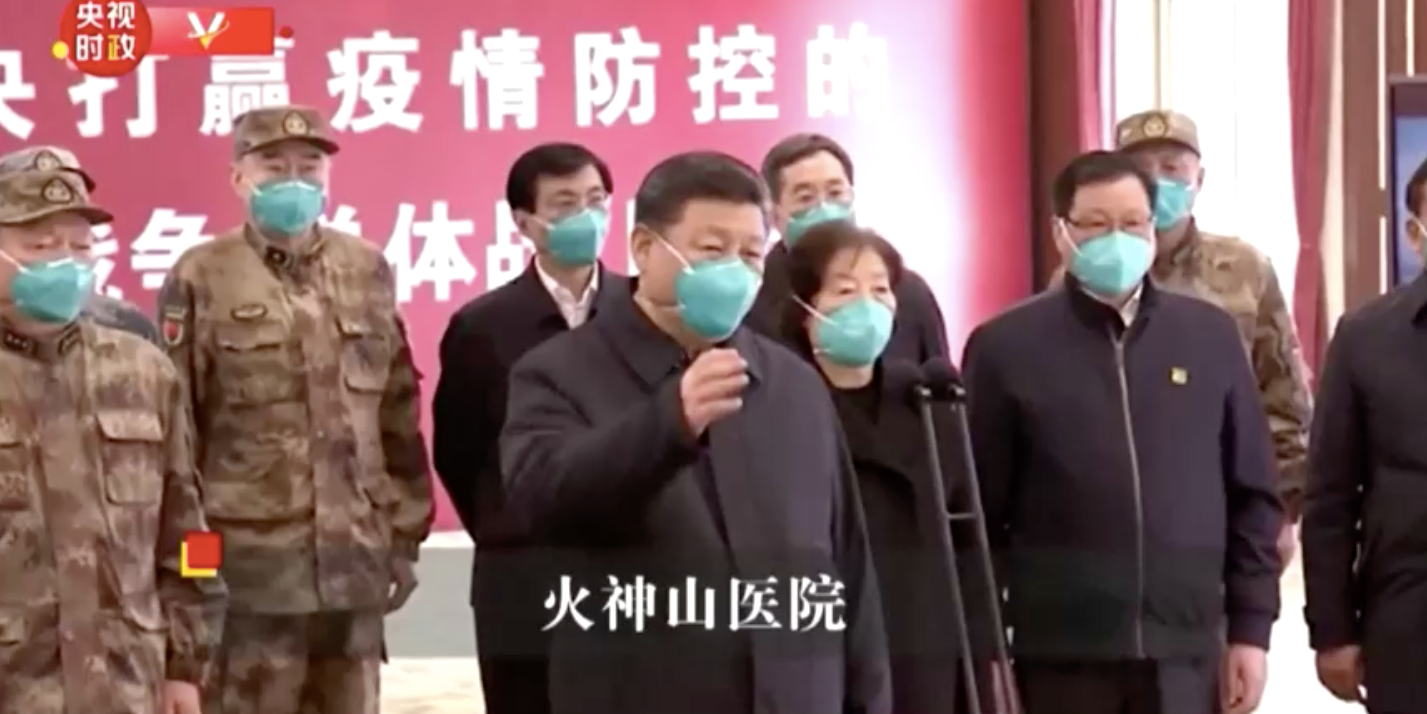- Xi Jinping visited Wuhan, the epicenter of the coronavirus, for the first time during the outbreak on Tuesday.
- The visit came as China recorded a dramatic reduction in new cases and deaths, suggesting it has turned a corner with the outbreak.
- Xi has been largely absent from the front lines, placing Premier Li Keqiang in charge. His Tuesday visit appears to show his readiness to take control of the narrative now the worst is over.
- China recorded just 19 new cases on Tuesday, while Italy, Iran, and South Korea continue to struggle to control the virus.
- Visit Business Insider’s homepage for more stories.
Chinese President Xi Jinping on Tuesday visited Wuhan for the first time since the coronavirus outbreak began in an apparent sign that he’s trying to claim victory over the disease now that the country has turned a corner with it.
His visit to Wuhan, where the coronavirus first broke out, came as the country records fewer and fewer cases each day. China recorded just 19 new cases on Tuesday, the Associated Press (AP) reported. Last month, the country had been reporting thousands of new cases a day.
The move indicates that Xi, who previously appeared to avoid taking responsibility for the fight against the virus, wants to score political points from the good news.
State TV crews on Tuesday filmed him visiting Wuhan’s Huoshenshan Hospital, which city authorities had panic-built in late January to accommodate coronavirus patients.
Photos: President Xi visits patients, medics at Huoshenshan Hospital in Wuhan (Photos: People's Daily) https://t.co/z44szN0n6p pic.twitter.com/0Jz94npsPs
— Global Times (@globaltimesnews) March 10, 2020
He was also filmed walking through a local neighborhood waving at residents in their windows, and later speaking to local shop workers from a safe distance.
He also spoke with infected patients via video link, the state-run Xinhua news agency reported..

Tuesday's visit is the first time Xi has ventured into Wuhan during the outbreak, which started in early December 2019.
During the first few months of the outbreak Xi has been entirely absent from the front lines, suggesting he wanted to distance himself from the public anger aimed at the lackluster response, censorship, and attempted cover-ups, as Business Insider's Alexandra Ma has reported.
On January 26, Xi placed Premier Li Keqiang in total control of the response, an unusual move as Xi has spent the last decade consolidating power and accountability in the president's office.
"For Li, it's the only time in seven or eight years that he's been the man of the moment," Richard McGregor, a Chinese politics expert at the Lowy Institute, told The Wall Street Journal at the time. "It's a huge opportunity for him."

On January 28, Xi claimed to the World Health Organization that he was "personally commanding" the response to the outbreak, but that line has not matched up with reality.
In an internal Communist Party speech published in February he also claimed he had been leading coronavirus prevention efforts since January 1, before the outbreak reached its peak, inviting suspicion that his guidance did not work.
He only made his first public contribution to the anti-virus effort on February 10 when he visited a coronavirus testing centre in Beijing, and ceremoniously had his temperature taken.
But now that China is recovering from the outbreak it seems Xi is keen to take a stronger part in the narrative.
"If the situation improves, he will take credit. If it worsens the blame will be pinned on Li Keqiang," Willy Lam, professor at the Chinese University of Hong Kong, predicted to The Guardian on February 4.
Earlier this week Wang Zhonglin, the Communist Party secretary in Wuhan, called for "gratitude education" so that citizens can properly thank the party and Xi for their efforts in the coronavirus. The statement drew swift backlash as many citizens had been lamenting the lack of freedom of speech during the outbreak.

On March 2, Xi Jinping also visited the Academy of Military Medical Sciences in Shenzhen to monitor the effort to find a vaccine for COVID-19, the official name for the disease.
Around 70% of coronavirus sufferers in China have recovered, the AP reported, citing the WHO.
Meanwhile other countries, notably Italy, Iran, and South Korea, continue to struggle with the outbreak within their borders. Italy recorded a dramatic uptick in cases and deaths on Monday evening, prompting Prime Minister Giuseppe Conte to impose a nationwide lockdown from Tuesday.
- Read more:
- Dozens of inmates escaped from Italian prisons as the coronavirus triggered riots and brought the country's criminal justice system to a halt
- Italy, now under lockdown, has been hit hard by the coronavirus outbreak. It also has one of the world's oldest populations with 60% over age 40.
- Italy's coronavirus death toll rose by nearly 60% in a day as the country put 16 million people on lockdown
- The healthcare system in Italy's Lombardy region is so strained from the new coronavirus that officials are asking doctors to come out of retirement and nursing students are being fast-tracked to graduation
- The Louvre, Legoland, and three Disney theme parks are closed because of the coronavirus. Here's all of the major museum and theme park closures so far.
- The CDC is warning travelers about visiting 5 countries because of the coronavirus. Here's the US government's guidance.

